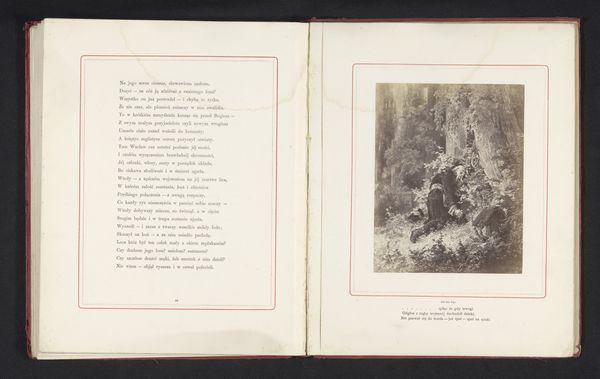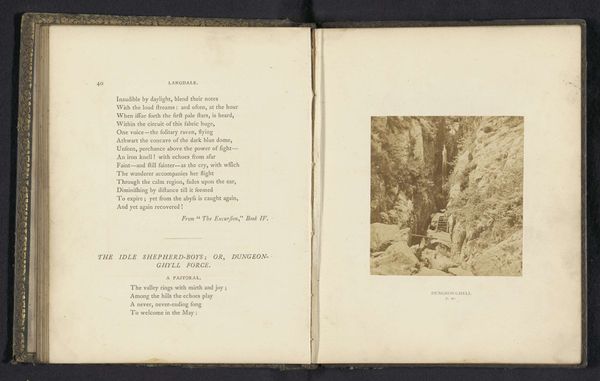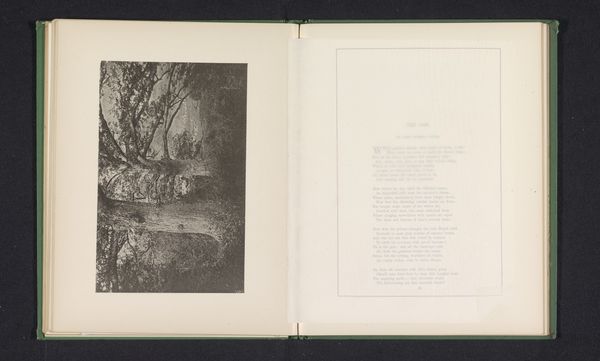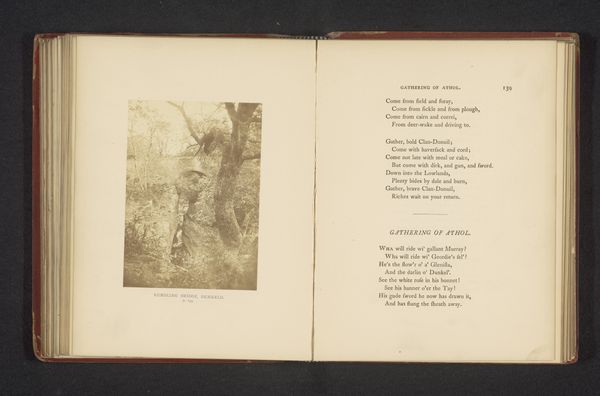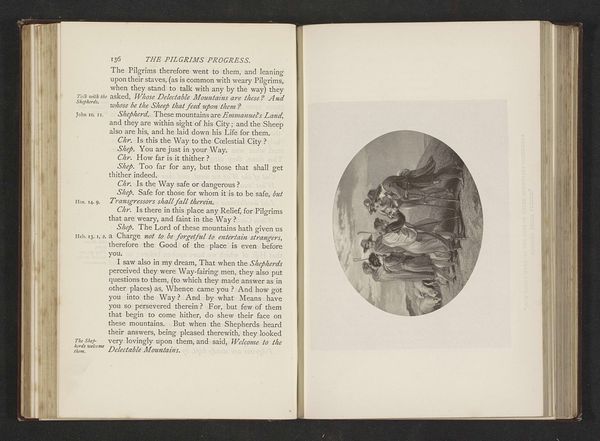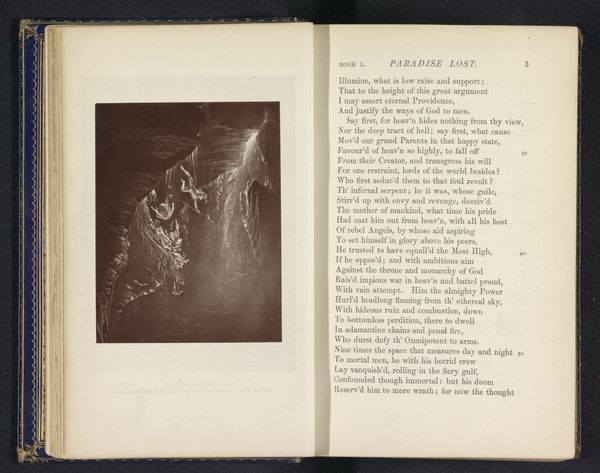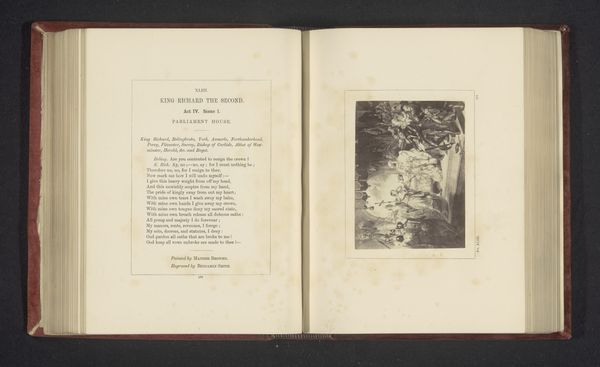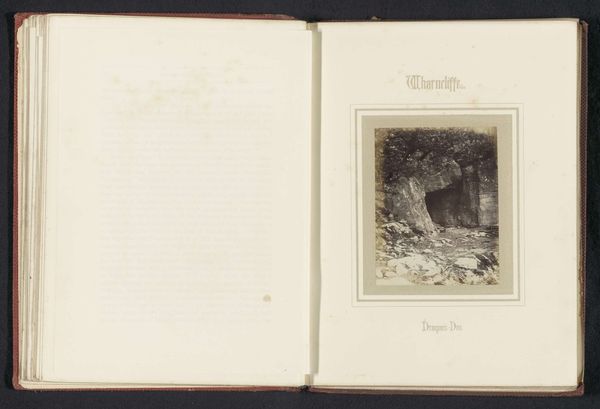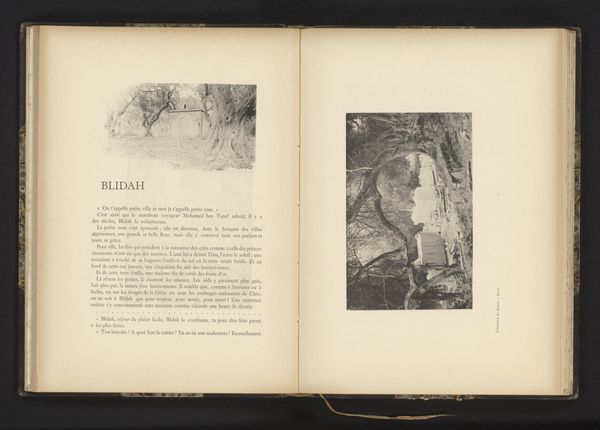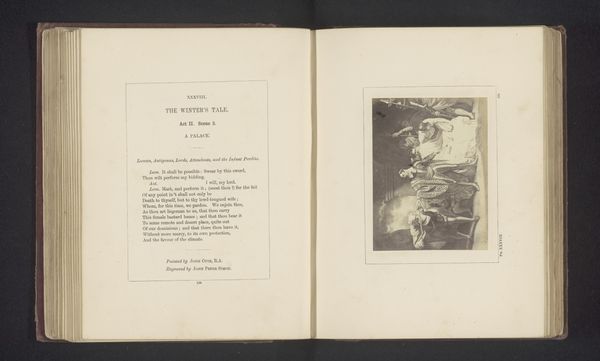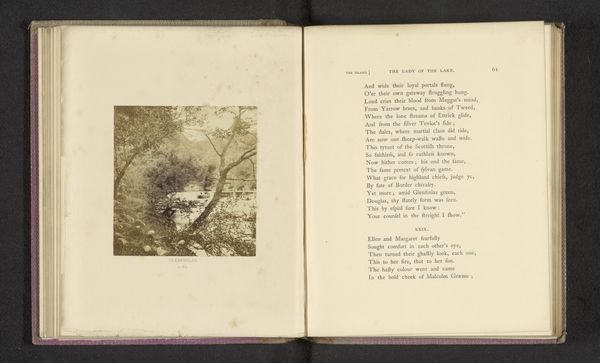
Dimensions: height 95 mm, width 74 mm
Copyright: Rijks Museum: Open Domain
Curator: Let’s discuss "Dragon's Cellar," a gelatin silver print attributed to Theophilus Smith dating to before 1864. Immediately, one perceives a somewhat mysterious, even forbidding landscape dominated by craggy textures. Editor: I see an archive of ecological memory. The print’s grainy texture speaks to environmental fragility and invites consideration of the geological processes at play. Are we meant to see it only as aesthetics, or is Smith documenting something more here? Curator: It's principally an investigation of form, wouldn’t you say? The high contrast delineates sharp angles and varied shapes which define this dramatic subject matter. The textures aren’t random, but carefully arranged elements for a coherent visual narrative. Editor: Arranged yes, but within the artistic and social constraints of Victorian England, perhaps? Considering Smith’s audience, can we disregard this choice in favor of the sublime’s darker undertones and broader social commentary, considering rapidly changing landscapes? Curator: Sublimity through landscape was the prevailing vogue. He presents us a space where darkness and light clash in their starkest forms. The titular “cellar,” functions less as literal space but an area which reflects our perception of spatial balance and pictorial composition. Editor: The cave-like "cellar" conjures tales from ancient folklore, no? Perhaps there's also commentary on accessibility and seclusion. Whose story is represented, and more importantly, who is deliberately excluded? Curator: Such speculations run the risk of diluting the photograph's concentrated power of form, its meticulous calibration of shade. Editor: But a "dragon's cellar" devoid of a larger narrative seems an impoverished encounter, a landscape rendered inert. These cultural layers and considerations enrich the work’s relevance. Curator: Perhaps, yet let us not stray too far from the careful deployment of the tonal arrangements and textured materiality of Smith’s visual expression. Editor: Indeed, but in order to create an authentic engagement, acknowledging those artistic gestures will benefit from understanding context and what exactly those Victorian gestures mean today.
Comments
No comments
Be the first to comment and join the conversation on the ultimate creative platform.

